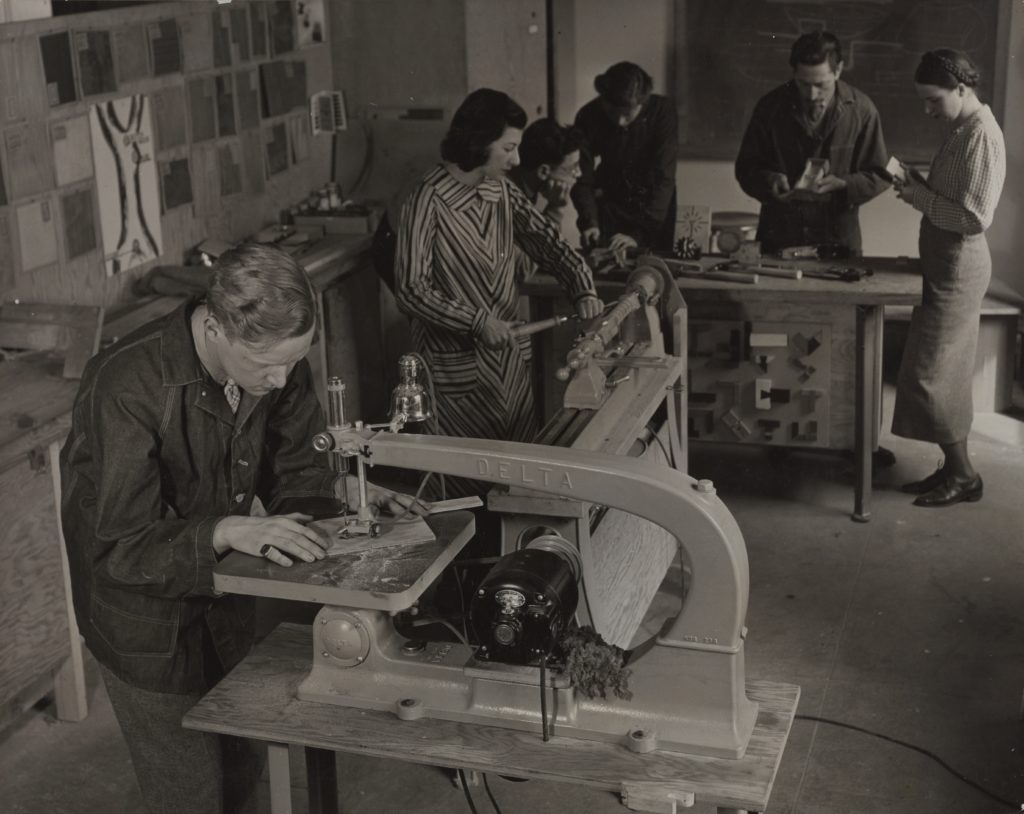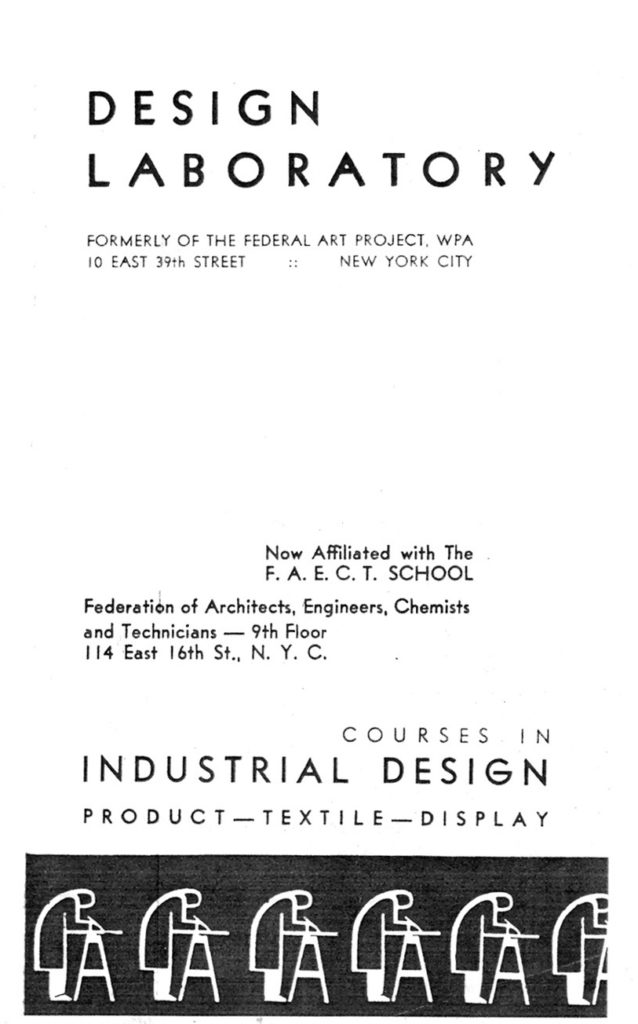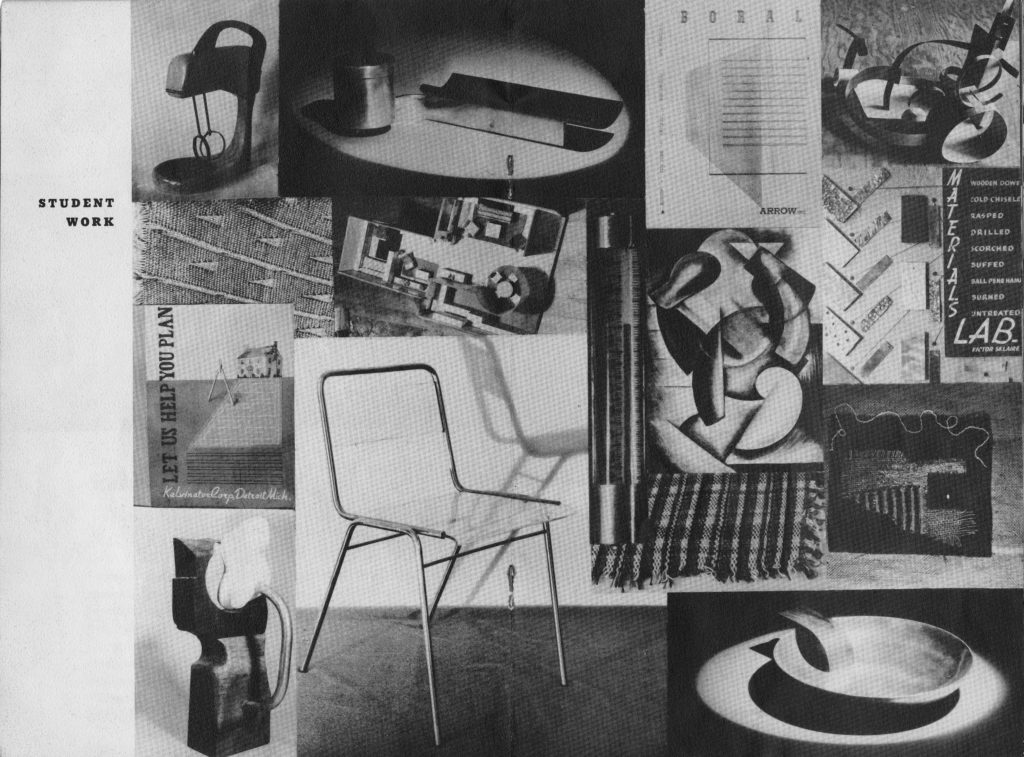Established in New York City in 1935, the Design Laboratory was the first comprehensive school of modernist design in the United States that was open to general enrollment. It was launched under the auspices of the Works Progress Administration’s Federal Art Project, a New Deal program that provided public employment for artists and other culture workers in the US during the Great Depression.
The Design Laboratory’s faculty, which included Bauhaus alumnae Hilde Reiss and Lila Ulrich, drew inspiration from its German predecessor, both by building upon its pedagogical and curricular innovations as well as by utilizing modernist aesthetics to provoke radical political and social transformation. Throughout its five years of existence, the Design Laboratory furnished a vibrant point of contact between an unprecedented public endeavor to democratize American culture, the aesthetic experimentation of the interwar modernist avant-garde, the business culture of commercial design practice in the US, and the Popular Front social movement.
When the school’s public funding was cut in 1937 as part of a general retrenchment, the Federation of Architects, Engineers, Chemists, and Technicians, a left-led union affiliated with the Congress of Industrial Organizations, assumed sponsorship of the Design Laboratory and ensured its continuation with a core of dedicated instructors led by designer William Friedman, abstract painter Irene Rice Pereira, graphic designer Paul Rand, and Reiss. In this new phase, the faculty elaborated the curriculum, consciously aspiring to push beyond the germinal advances in modernist design education that had been pioneered at the Bauhaus, and enrollment peaked at 400 students.
Following a second reorganization in 1938 as an independent cooperative, the school – rebranded as the Laboratory School of Industrial Design – received state authorization to confer Bachelor of Arts degrees to students who completed a four-year course of study. Ultimately, the lack of support from a larger institutional sponsor intensified the school’s financial precarity, forcing it to suspend operations and disband in 1940. As for its faculty and its students (notably furniture and housewares designer Don Wallance and interior designer Suzanne Sekey), their experiences at the Design Laboratory shaped their future creative work as artists, educators and critics during the middle decades of the 20th century.





